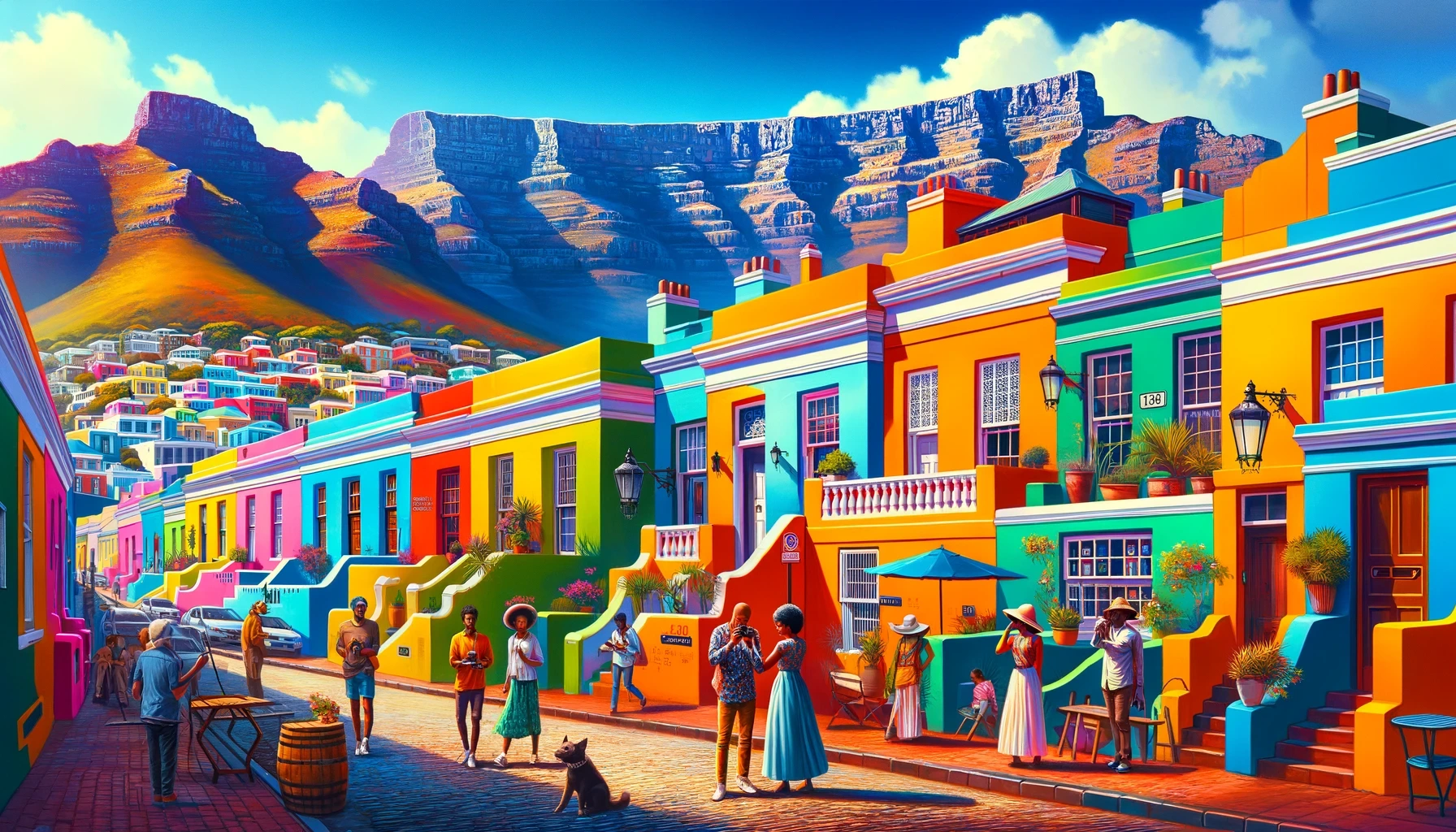Nestled at the foot of Signal Hill, Bo-Kaap is an area in Cape Town, South Africa, known for its brightly colored homes and cobblestoned streets. Rich in history and culture, Bo-Kaap is a vibrant testament to the city’s multi-ethnic heritage, particularly its Cape Malay community. This picturesque neighborhood is not just a photographer’s paradise but a place where history, culture, and cuisine blend seamlessly to offer a unique tourist experience.
The Historical Tapestry of Bo-Kaap
Originally known as the Malay Quarter, Bo-Kaap’s history dates back to the 17th century. It’s a district that tells stories of slavery, colonialism, and the struggle for freedom, intertwined with the resilience and spirit of its community.
1. Architectural and Cultural Delights:
- Colorful Houses: Bo-Kaap’s most distinct feature is its row of brightly painted houses, ranging from lime green to pink, which not only make for stunning photographs but also symbolize the area’s freedom and diversity.
- Cobblestone Streets: Walking through the cobblestone streets of Bo-Kaap transports you back in time, offering a glimpse into the area’s rich history.
2. The Cape Malay Influence:
- Cape Malay Heritage: The Cape Malay community, descendants of Indonesian, Malaysian, Indian, and East African slaves, have significantly influenced the area’s culture, evident in the cuisine, language, and traditions.
- Mosques and Minarets: Bo-Kaap is home to several historic mosques, including the Auwal Mosque, the oldest mosque in South Africa, symbolizing the Islamic faith of many residents.
3. Culinary Journey:
- Cape Malay Cuisine: Discover the flavors of Cape Malay cuisine, known for its fusion of sweet and spicy flavors. Must-try dishes include Bobotie, Samoosas, and Koeksisters.
- Cooking Classes: Participate in cooking classes to learn the secrets of traditional Cape Malay cooking.
4. Museums and Cultural Tours:
- Bo-Kaap Museum: The Bo-Kaap Museum, housed in a 19th-century building, offers insights into the area’s history and the Cape Malay culture.
- Guided Tours: Join guided walking tours to learn about the area’s history, visit historical sites, and engage with local residents.
5. Festivals and Events:
- Cape Town Minstrel Carnival: Experience the Cape Town Minstrel Carnival, an annual event where locals, dressed in bright costumes, parade through the streets with music and dancing.
6. Shopping and Souvenirs:
- Local Crafts: Explore the small shops and stalls selling handmade crafts, fabrics, and souvenirs, showcasing the artistic talent of the community.
7. Accommodation Options:
- Stay in Bo-Kaap: From boutique hotels to cozy guesthouses, staying in Bo-Kaap offers a unique experience, allowing tourists to immerse themselves in the local culture.
8. Tips for Visitors:
- Respect the Locals: Remember to respect the privacy and culture of the residents while enjoying the sights.
- Best Time to Visit: The neighborhood is most vibrant during daylight hours, particularly in the morning when the sunlight enhances the colors of the buildings.
Bo-Kaap, with its rich history, vibrant culture, and colorful streets, offers a unique window into the heart of Cape Town’s diverse heritage. A visit to this charming neighborhood is a journey through time, color, and flavor, leaving tourists with unforgettable memories and a deeper understanding of South Africa’s multicultural landscape.
